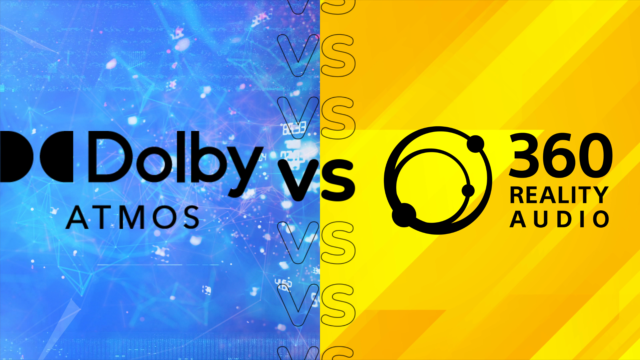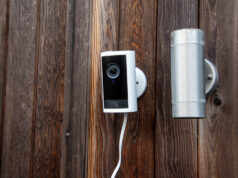Spatial audio has become an increasingly important area of the audio market in recent years. Stereo channels is boring, and it’s all about sounds that whizz at and past you.
Yet, that description rather undersells what 3D audio intends to do. We’d be first (or at least one of the first) to say that spatial (or 3D) audio can be gimmicky, but the real point of spatial audio is to immerse you within a world of sound, one that apes how we would listen to audio in a natural way.
Dolby Atmos and 360 Reality Audio are two of the biggest proprietors of 3D audio. You can listen to the 3D formats on several devices such as headphones and soundbars, and in some cases through streaming services. The future of audio isn’t coming, it’s already here, so which out of Dolby Atmos and 360 Reality Audio is better?
What is Dolby Atmos and how does it work?
First off, what is Atmos? Well, as you’ll already have noted, it’s a spatial audio format but in more technical terms it’s object-based immersive audio format.

What are these objects, we here you say? The way Dolby Atmos works is that it’s not restricted by channel-based surround sound systems, your more conventional 5.1 and 7.1 speaker layouts. Essentially sounds can start anywhere and move around the listening space, and each sound is defined as an object.
There can be up to 128 audio objects, with 10 channels/objects used as the bed (or foundation) and 118 objects free to move about in space. This creates that sensation of lightning striking from above or capturing someone’s voice as they move from the front to the back of the space you’re in. The best kind of Atmos soundtracks are often the ones where it’s subtle.
What is 360 Reality Audio and how does it work?


At first blush, 360 Reality Audio would seem to be the same thing as Dolby Atmos. In reality (excuse the pun), it essentially is.
Sony built 360 Reality Audio around the free-to-use MPEG-H 3D Audio codec, which like Atmos supports 64 individual channels. Like Atmos, it can move audio around from back to front, side-to-side etc to create that immersive feel.
What devices support the spatial audio formats?
Dolby Atmos is, basicaly, everywhere. Your smartphone can play Atmos content (although fewer phones have the actual Atmos processing onboard). It’s supported in soundbars, headphones, wireless surround systems, TVs, AV receivers, game consoles, wireless speakers, and more devices we’ve probably forgotten about.
360 Reality Audio is widely available but not as much as Atmos is. There are headphones, soundbars, and wireless speakers feature, but for the most part, these products are made by Sony. There are a few brands that support 360 Reality Audio on their headphones such as Audio-Technica, but Atmos pretty much dwarfs 360 Reality Audio in terms of sheer number.
Where can I listen to Dolby Atmos and 360 Reality Audio?
With Atmos you’ve got physical media such as 4K Blu-ray and Blu-ray that support Atmos mixes. You’ve also got music streaming services such as Apple Music, Tidal, Amazon Music where you can listen to to music in Dolby’s 3D audio format. Pretty much all the video streaming services support Atmos, such as Disney+, Apple TV+, and Netflix, though you have to pay a premium for access to it.


Sony’s rival is less present in the market. It was supported by Tidal but was dropped in favour of focusing on Atmos, while it does appear on Amazon Music and the Deezer 360RA app. You won’t find it on physical media such as Blu-ray but that’s not what Sony is really aiming for with 360 Reality Audio.


It recent years it’s taken a different tact with the format, working on top of existing Dolby Atmos soundtracks with its 360 Spatial Sound Mapping technology. We’ve only heard it on Sony soundbars (surprise), but it works by creating a map of the room and dictating where sounds should be placed depending on the speakers you have at your dispsoal. It measures the room and calibrates the sound so you get the right immersive experience that you’re looking for.
Which is better?
As Dolby Atmos and 360 Reality Audio do the same thing, neither is necessarily better or worse. What matters most is the catalogue, compatibility and access to it, and Atmos wins in that area. There’s more music mixed in Atmos, there’s more ways to access it, and there’s more way to enjoy it.
360 Reality Audio is by and large the same technology but going down a slightly different path. There are multiple versions of 360 Reality Audio, whether for gaming, music, sound mapping, and personalisation that do give it a slightly different experience.
The thing is that you don’t really have to choose between the two. 360 Reality Audio technology rather complements Atmos on soundbars and sound systems, and we’re almost certain we’ve head Sony say that its tech improves upon Atmos.
Regardless, both look to be here for the long-term, so you better buckle up for immersive sounds being the way you listen to film, TV, and music.










